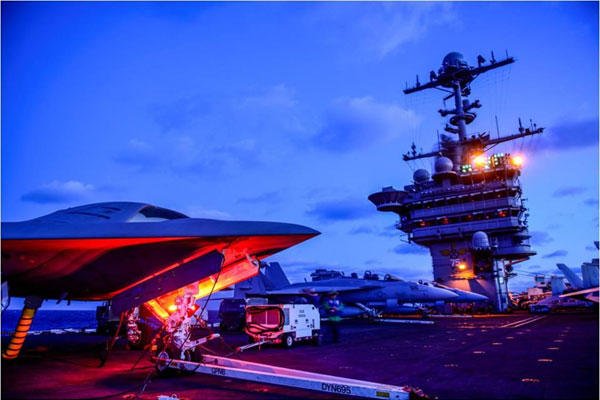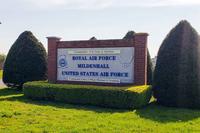The Navy's top officer said he sees a widening gap between the service's performance and its potential -- but also opportunities to move ahead quickly with technological advances.
Speaking at the U.S. Naval Institute's annual Defense Forum on Monday, Adm. John Richardson said the sea service today finds itself in a challenging position, with financial constraints, limited buying power and key global competitors, including Russia and China, who are quickly developing parity in terms of ability. As technology develops at an exponential rate, Richardson said he sees the Navy lagging behind.
"If you see the gap between potential in performance and where we are in delivering performance, that gap is just starting to open," he said. "It's not a huge gap right now; it's probably small enough that on our best days we can convince ourselves we're doing OK. But you can see, going forward, that that gap is only going to widen at ever increasing rates."
Despite this troubling outlook, Richardson said he saw ways the service could move faster in developing key capabilities, including its unmanned carrier-launched aircraft and in testing technologies through fleet experimentation.
"It is possible, if we are sort of united in this effort, to come up with sort of an 'HOV lane' if you will, that can fast-track some really mature and right ideas -- the right types of technologies," he told reporters following his address. "Once we see that happen … then more and more people can start to gradually move over to the streamlined way of buying."
The Navy's Unmanned Carrier-Launched Airborne Surveillance and Strike, or UCLASS, system, he said, was one candidate for a faster development path, he said.
The service's plans for carrier-launched drones have been embattled by red tape and capability requirements. The UCLASS is expected to come online in 2025.
"I talk about a quick learning cycle going forward, I think [UCLASS is] a prime candidate for that," he said. "Trying to get something out there, unmanned, so we can learn how to operate an unmanned aerial vehicle from a carrier … I think that this UCLASS program and other unmanned technologies are sort of primed for this type of program."
Richardson also said he'd like to see more experimentation with gear and systems in the fleet so that the Navy could harness the knowledge and instincts of the sailors who will use the equipment. More fleet experimentation would be a key step in accelerating development, he said.
"The real magic happens when you put [technology] with the developers and they meet the sailors out there and they watch their idea come to life," he said. "The amount of creativity out there in the fleet is tremendous."
--Hope Hodge Seck can be reached at hope.seck@monster.com. Follow her on Twitter at @HopeSeck.




























